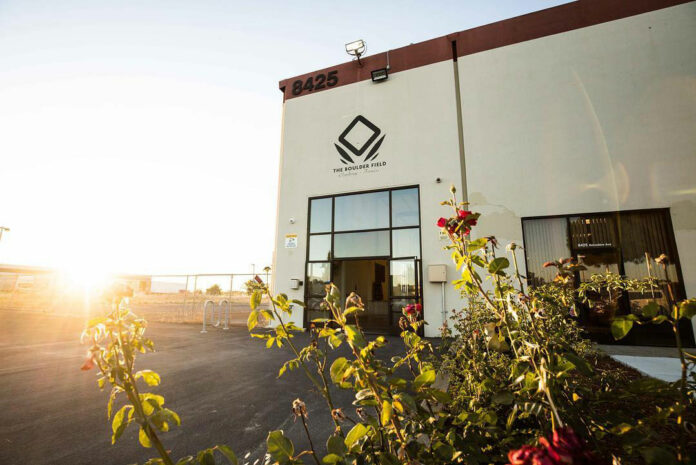This story is the fifth and final chapter of a five-chapter series on Professional Routesetting: The Truth Behind the Trade by Dave Wetmore. Scroll to the end of the article for bios of routesetters interviewed in this chapter.
Read More Chapters of Truth Behind the Trade
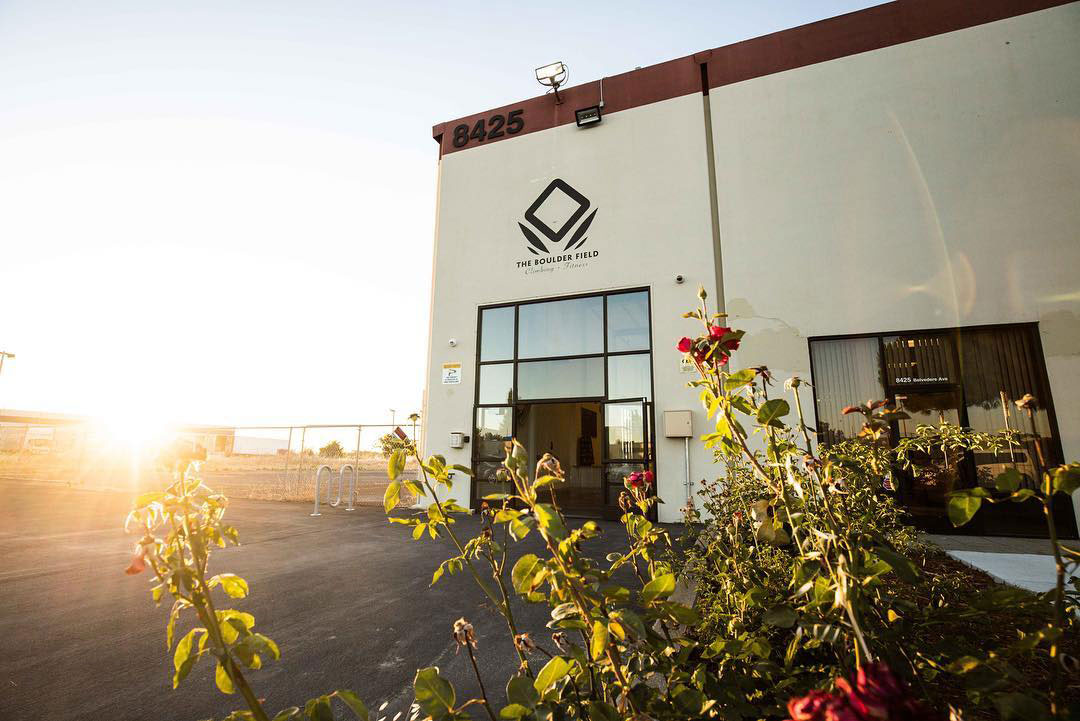
One truism the pause of the pandemic proved to me is that as long as there’s no end to the little things, you never have to stop and confront the bigger questions. During The Boulder Field’s closure, I was forced to slow down and reassess what I had been doing as a routesetter for half of my life.
Everybody will describe what they need to stay happy at work differently, but for me it came down to two simple things: freedom and flexibility. In taking a step back, I realized that my workflow not only made it challenging to recover and have the time and energy to regularly get outside, but it was also gradually eroding away at my ambition to climb in the first place―the very reason I started down this road over a decade ago.
Luckily, in 2020, Carlo Traversi and his father, David Traversi―who have supported me in every decision along the way―allowed me to stop working the standard 40-hour work week while maintaining my role as Head Setter. Once I was only setting and forerunning three days per week, my psyche returned. I was able to perform my best at work and outside on rock. I wanted to be at the gym again. I wanted to watch and listen to our clientele. For a moment, doing less allowed me to do so much more.
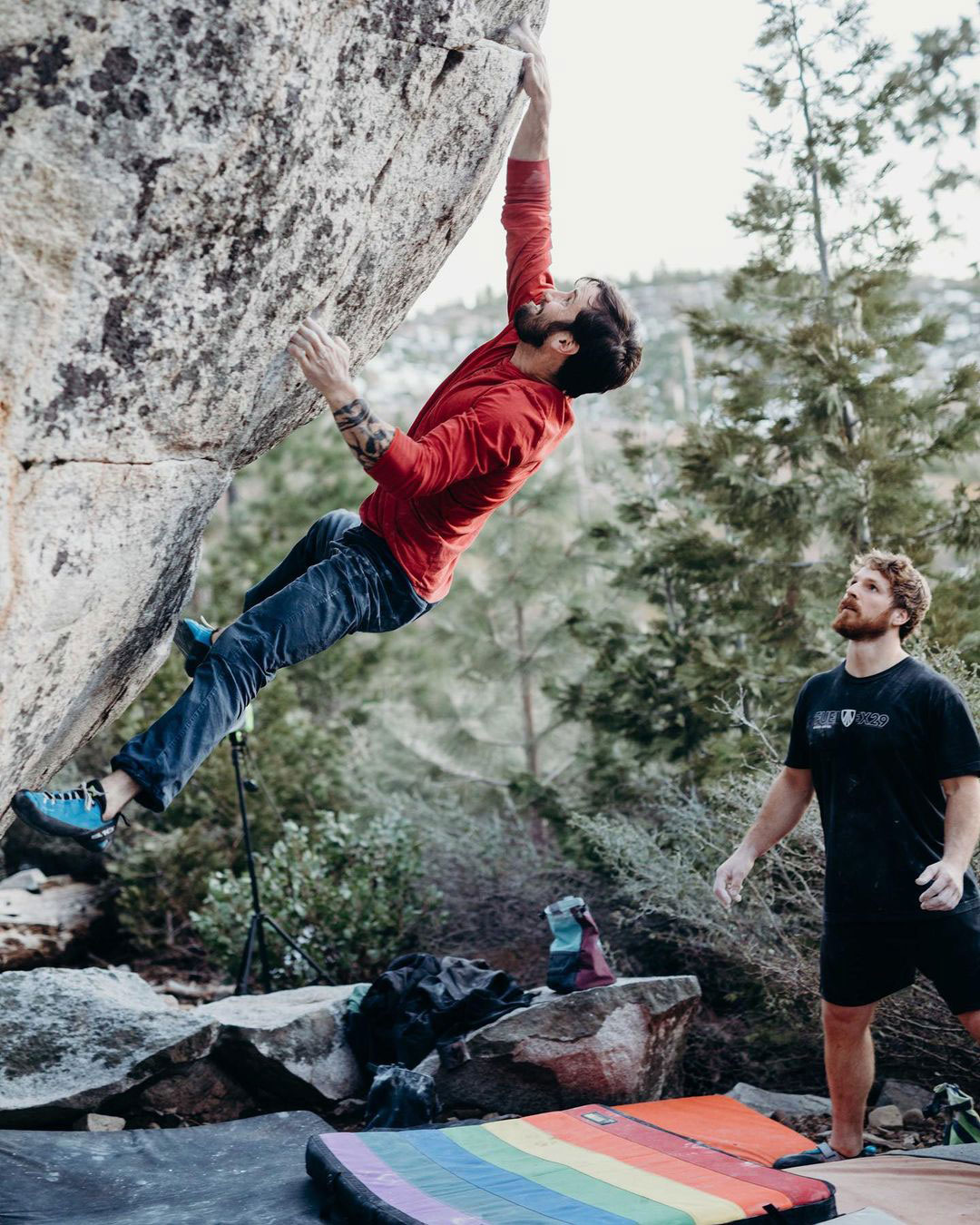
Labor Is Not Valued Equally
Whether it be as a Head Setter for multiple gyms or chiefing national and international events or privately sanctioned series, I’ve found that in order to maintain passion, creativity, physical longevity, and a genuine interest to serve the local climbing community, setting and forerunning only two to three days per week has been crucial for me at multiple points in my career.
But there’s a catch: If you work less, you have more time and energy to climb; however, your income decreases. And if you work more, you have increased financial stability, but then have less time to climb. It’s a tension I’ve wrestled with throughout my career. Nevertheless, I’ve always valued the privilege to make that choice for myself, and I’m hopeful there are ways to find the right balance.
The concept of routesetting with free agency, for example, was what I was exploring in 2020. Is it possible to lose the old world, non-compete structure and start product sharing more? In this way, experienced routesetters could operate with complete sovereignty over their skills and services, working at multiple out-of-state gyms once or twice each quarter, while also setting part-time consistently for just one company.
In general, this type of freelance-style commercial routesetting can and does work well already for a relatively small group of traveling setters in America and is in fact quite common in other countries. But as with all freelance work, not everyone values it the same.
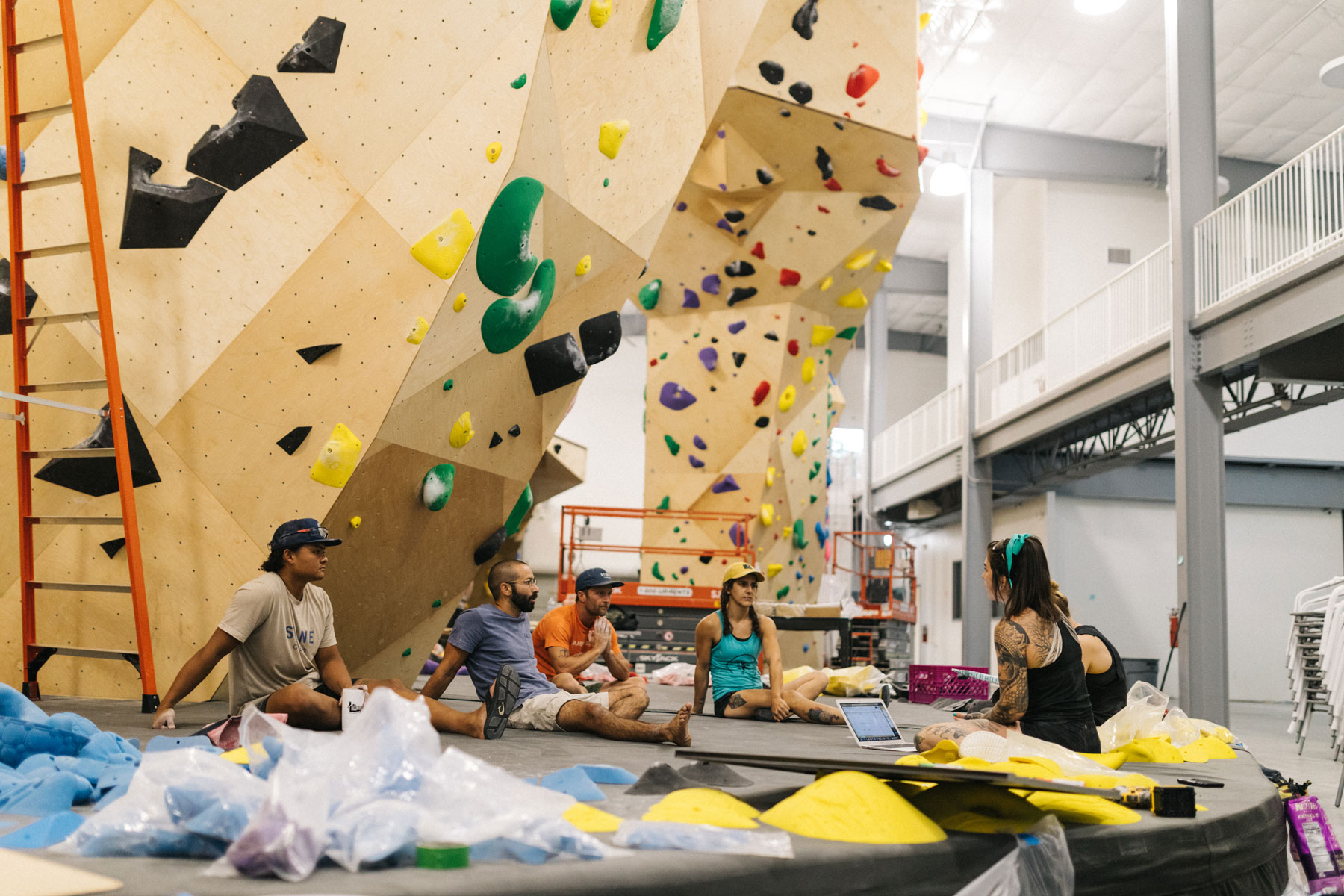
“I just don’t see that working ultimately,” says Brad Weaver. “What does your community want? They want consistency and quality over time…In this model you’re proposing, quality control would be a huge factor. If routesetters come in and they don’t have a connection to gym owners or management or anything to do with the gym, it’s just too easy for people to go in and slam grips on the wall and bounce, right? It’s important to have relationships and to be invested in the product. I think all of us are naturally invested in the product because it is an extension of ourselves and it’s like our signature…But the more we can be invested in the facility, to whatever’s going on in the community, then the better off it’s all going to be.”
Alongside route consistency concerns, others point out the financial constraints to repeatedly bringing in higher-skilled setters at the top end of the free agent pool. While one could argue the improved route quality would ultimately bring in more members, not all gyms are willing to take the risk on “big timers” when they can pay someone 15 to 20 dollars an hour for a product that still “gets the job done.”
“We’ve had a handful of setters be like, ‘Hey, my name is blah, blah, blah, here’s my resume, and I’m available to be a guest setter or to do clinics at your gym.’ And I’m like, ‘Cool, buddy. Good on you. We don’t have a budget for that right now. But good for you,’” Molly Beard says. “The skill level in the setting industry has gotten to a point where the need for somebody to come in and offer some training is pretty low. There’s not as great of a need for that anymore. The skill level of setters right now is so much better than it was 15 years ago, like magnitudes better.”
However, not all gyms are in the same boat here. Others don’t share the same level of these concerns, and perhaps the best way to categorize the contrast is along market lines. In larger markets where competition between gyms is greater and small improvements to route quality can make a big difference, one could argue there are more advanced positions at gyms than skilled setters to fill them. There are still numerous gyms in the country who are looking for outside help to offer training clinics or be part of setter swaps, for instance.
While I agree the industry has come a long way in terms of routesetting expertise, the lack of educational opportunities in the profession to catch up to the demand has still meant that many new setters are learning to climb inside on routes set by other setters learning to climb while learning to set. Hmm. This surely can’t bode well for the future, which leads me to one of the major malfunctions within the profession right now.
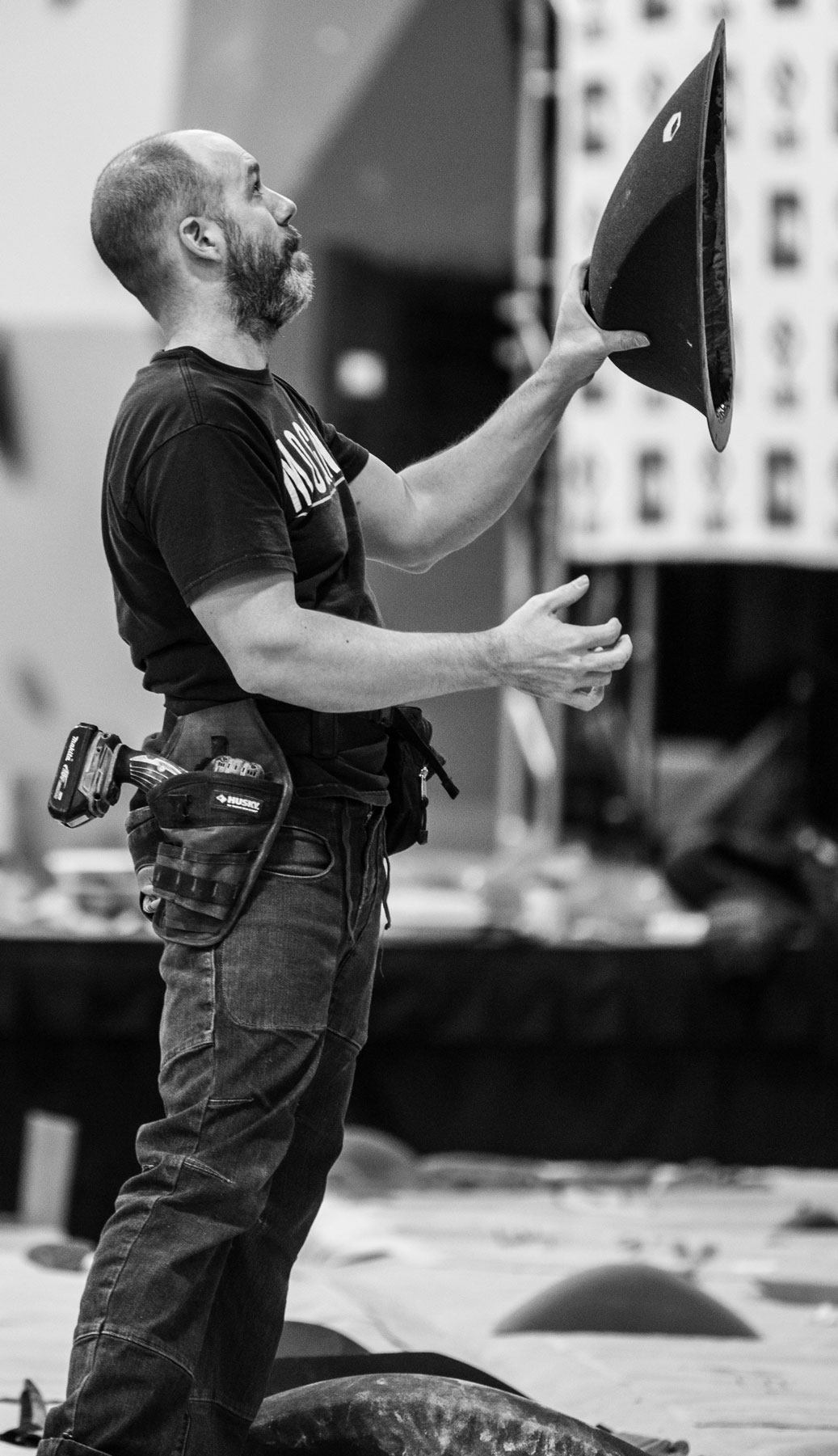
Retention Is as Important as Renewal
“Right now, more than ever, I’ve never seen the demand-supply issue as it is. It’s always been bad, but not like it is today. Where do I find good routesetters? How many times have I gotten that call in 15 years? There are all these gyms opening up every year, even during the [Covid] shutdowns [in 2020], and they can’t find anybody,” affirms Chris Danielson.
In talking with Danielson and other setters for this series, it’s clear this occupational problem has to do with both training new setters to become skilled setters as well as retaining existing ones. Besides the need for more education―discussed in Chapter 4 of this series―a key part of balancing this equation is keeping skilled setters from jumping ship. Because at the end of the day, career-minded routesetters are not just comparing one setting job with another; they’re comparing one career to another, a choice which comes with a higher opportunity cost.
“After three to five years, most routesetters move on to the next best job or leave the industry,” continues Danielson. “Maybe there should be an operational shift for the entire ownership system. I understood the retainment approach and pushed for it myself a lot, but maybe gym owners shouldn’t be thinking about what they have for the past decade: ‘How do we keep route setters?’ But rather, ‘How do we build systems that feed us a constantly rotating flow in a healthy way of young routesetters that we don’t expect to be here for that long?’ Future routesetting operations have to be based on the fact that gyms are going to have flow and turnover in a really constant way, even in the Head Setter role.”
But however probable, frequent turnover can be costly for a gym, and not all setters want to move on to other work as they age. And at the very least, the choice should always be theirs to freely make, not a forced hand. Ultimately, when it comes to the question of renewal vs. retention in the routesetting labor market―similar to the question of USAC certifications vs. commercial setting experience discussed in Chapter 3―the best answer in my opinion is yes. We need educational pathways that support the renewal of high-quality routesetters as veterans scale back, retire, or change careers. But we also need retention models which better support routesetting careers, for the benefit of setters and gyms.
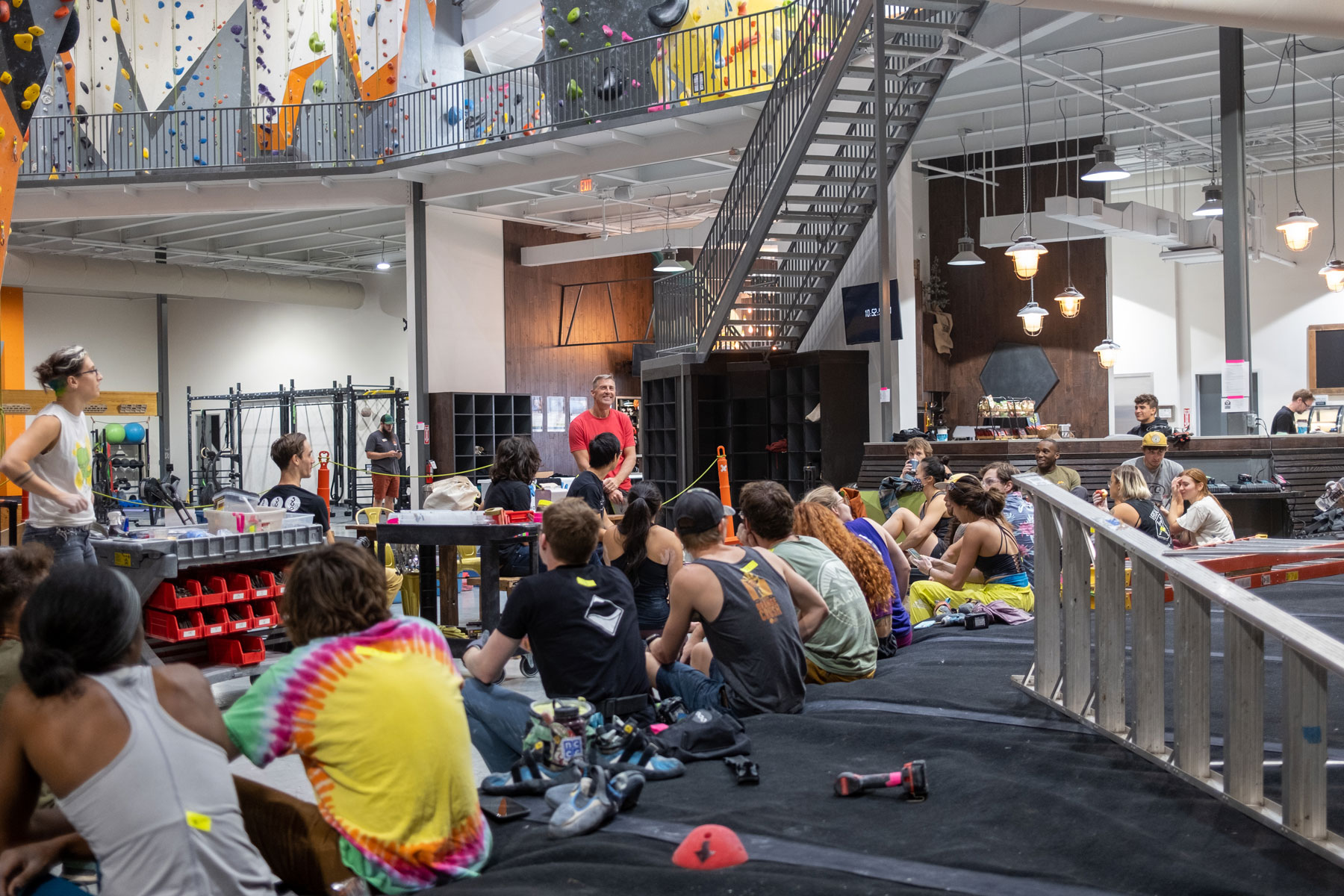
The key word in that sentence is models―plural. While improved industry standards will absolutely help with setter retention, they will always be applied in the specific context of one gym and one setting team, and every gym owner and setter is unique and has their own professional goals. The best I can hope for is that every employer would give the setters on their team the freedom and flexibility to pursue theirs, which is what has kept me going in this ever-evolving field of work.
Fortunately, I’m not the only one being given that privilege. Countless experiments in routesetter retention have been underway across the industry over the years. Below are just a few setups for gyms and setters to consider exploring together, to help make their routesetting work more sustainable:
1. The Full-Time, Short-Term Setter
Even though routesetting is a demanding job, there do exist ways to support setters’ physical, mental and financial well-being at least in the short-term, even if one argues that setters aren’t “meant” to stick around. Physically, gyms can give medical benefits, which include physical therapy and paid time off, or diversify a setter’s weekly agenda by balancing physical tasks, like setting and forerunning, with relational tasks, like interacting with customers. Mentally, gyms can give medical benefits, which include counseling and paid time off, and help setters stay motivated by guest setting. And there’s business sense in doing so. Financially, one could argue that gyms in more competitive gym markets can earn higher profits by offering higher compensation and better working conditions to attract and retain higher-skilled setters who set higher-quality routes for a longer period of time.
2. The Full-Time, Long-Term Gym Employee
Although the demands of routesetting make it difficult to sustain long-term, there are other ways for setters to stay employed full-time by the gym, which hopefully keeps them earning medical and maybe even retirement benefits. As Helt described in Chapter 4, especially as setters age, gyms can diversify the type of work that a full-time employee does at the gym, such as working half of the week on managerial, coaching, administrative or marketing responsibilities and the other half of the week on setting duties.
3. The Full-Time Head Setter
Whether you’re a seasoned veteran or just starting out as an advanced setter, there are many gyms out there that need dedicated, high-quality setters. To create more opportunity for up-and-coming setters within each community to take on more advanced roles, gyms and outside institutions can support continued routesetter education in a myriad of ways: providing in-house setter training courses and mentorship programs; hosting USAC clinics, one of Louie Anderson’s Setter Showdowns, clinics with the Routesetting Institute, Syndicate Routesetting and Thread Climbing, and BIPOC or LGBTQ+ or women-specific workshops and events with The B.I.G. Initiative, Womxn Up and Siege Climbing; funding employee travels for USAC and CWA certifications; and so much more. Setter education is slowly catching up to the exponential growth of the gym market and will continue to expand in the future.
4. The Part-Time Setter Climber
Setting part-time doesn’t exactly pay the bills, but for a period of time it can help maintain longevity and creativity. The part-time model isn’t just about creating more time to be lazy or to scale rocks, or to pretend to be a writer. It is about carving out more time to pursue independent work, to do what brings you life. Teaching new people at the gym, creating a series of setting clinics throughout the local community, setting competitions across the country, and guest setting with whoever is psyched to collaborate and pay a fair wage has at many times provided me with a new source of energy and enthusiasm for routesetting.
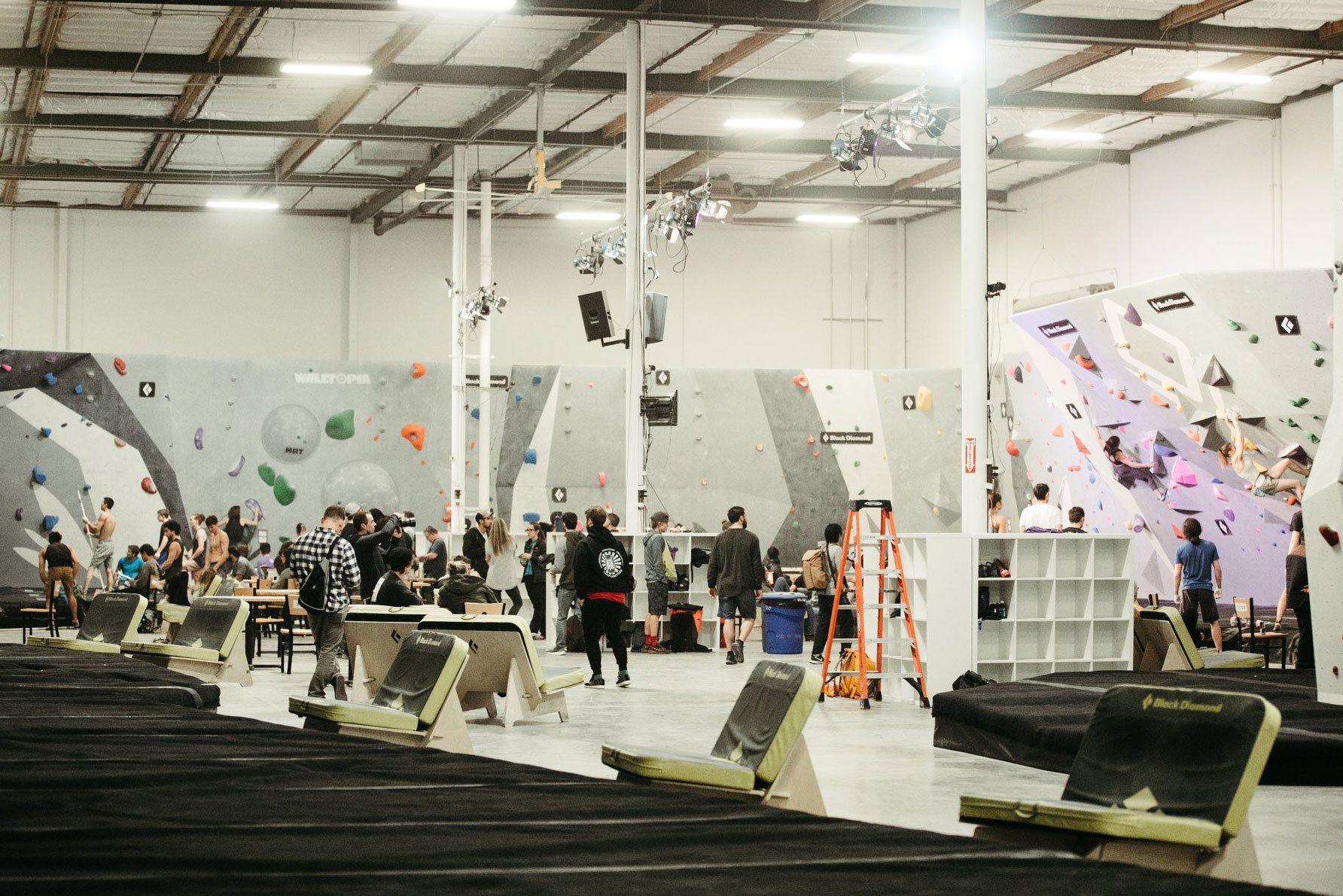
Back to the ‘Ole Grind
When I first began this multi-chapter series back in 2020, we were all in the middle of a hiatus from gym climbing due to the pandemic. For the first time in so long, I was finally able to take a step back and reflect on my work. I figured once the world opened back up, I would take the routesetting business by storm and do my own thing for the betterment of my own quality of life. That old mentality—the full-time hustle, 40-hour work week—is for the birds, I thought. I’m better than that. I can do better than that, I told myself. In my mind, all I needed was a setting job or two each month and some writing to get by. And I was right. A few setting jobs every quarter, plus part-time regular work and an article every month, was enough to get by.
But after all these years in the industry, just getting by all over again eventually began to feel like a sledgehammer to the gut. After an entire year of hustling this new approach in different states all over the country—setting for clinics and comps, training other companies, and writing on the side—I found myself on the other end of the pipedream and started feeling worse than when I had my full-time job. And here’s why:
Traveling every month was taxing. Time on the road or in the sky felt like a waste. I left my dog and my wife behind too much for not enough money. Working for lots of different organizations throughout the year hadn’t afforded me more time to write or climb at all; it actually took away from those precious opportunities because as soon as I returned from a work trip, I headed straight to the gym to begin the next turnover in order to make up for lost time. Working with different people every month—especially for an introvert like myself—was especially taxing, even more so than the physicality of the work, in a way I hadn’t predicted.
What hurt most of all was the decreased value of my work. My first setting salary in Boston was not far above minimum wage at the time. It was enough money to subsist and that was it. From 2018 to 2020, I was making a full-time Header Setter’s salary at The Boulder Field. For years and years, I had worked as hard as possible to make myself a known entity in the gym world, and it wasn’t easy. I hustled for two decades to reach a certain status and then I threw it all away for $20-per-hour, part-time setting work and side gigs.
You know the kind of pit that settles into your throat when you feel sad? That’s how I felt when I thought about how I’d thrown away all that work, time and energy for the life of a setting pirate.
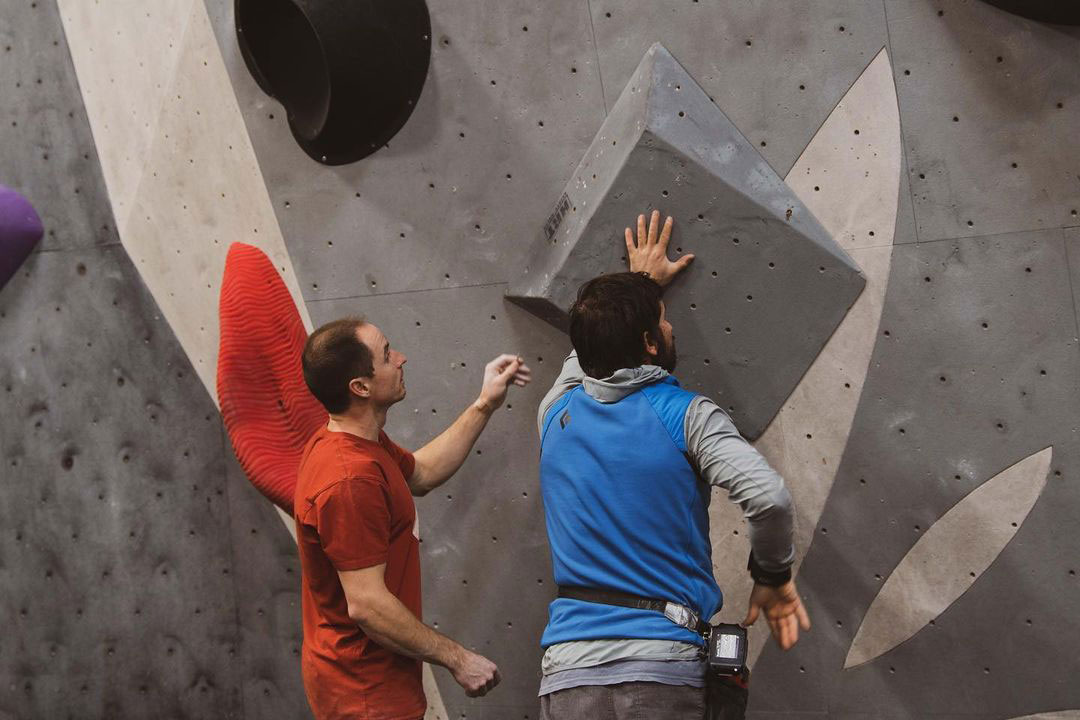
Luckily, there is a silver-lining in all of this. I sat down with Carlo in 2021 and asked him for my full-time job back: 40-hours in the gym per week, three days of setting, 30 boulder problems each week. Strip, wash, vacuum, mentor apprentices, interact with customers—the whole sha-bang. I want it all back, I told him. Just as crucial to the whole equation, I had to admit, was the money. I wanted a full-time salary back, as well as the health insurance, PTO, and metaphorical cozy blanket of financial stability that came with it.
But most of all, I wanted that satisfaction that comes from doing a job well done for something greater than just another paycheck, contributing whole-heartedly to a community that thrives based on your full participation within it. So, in another twist for my routesetting journey, I decided to take the achy body and mind, the repetition and monotony of the job, over a fleeting feeling of control and an unknown future.
It’s been two years since I moved back to full-time routesetting at The Boulder Field, and I haven’t regretted that decision one bit.
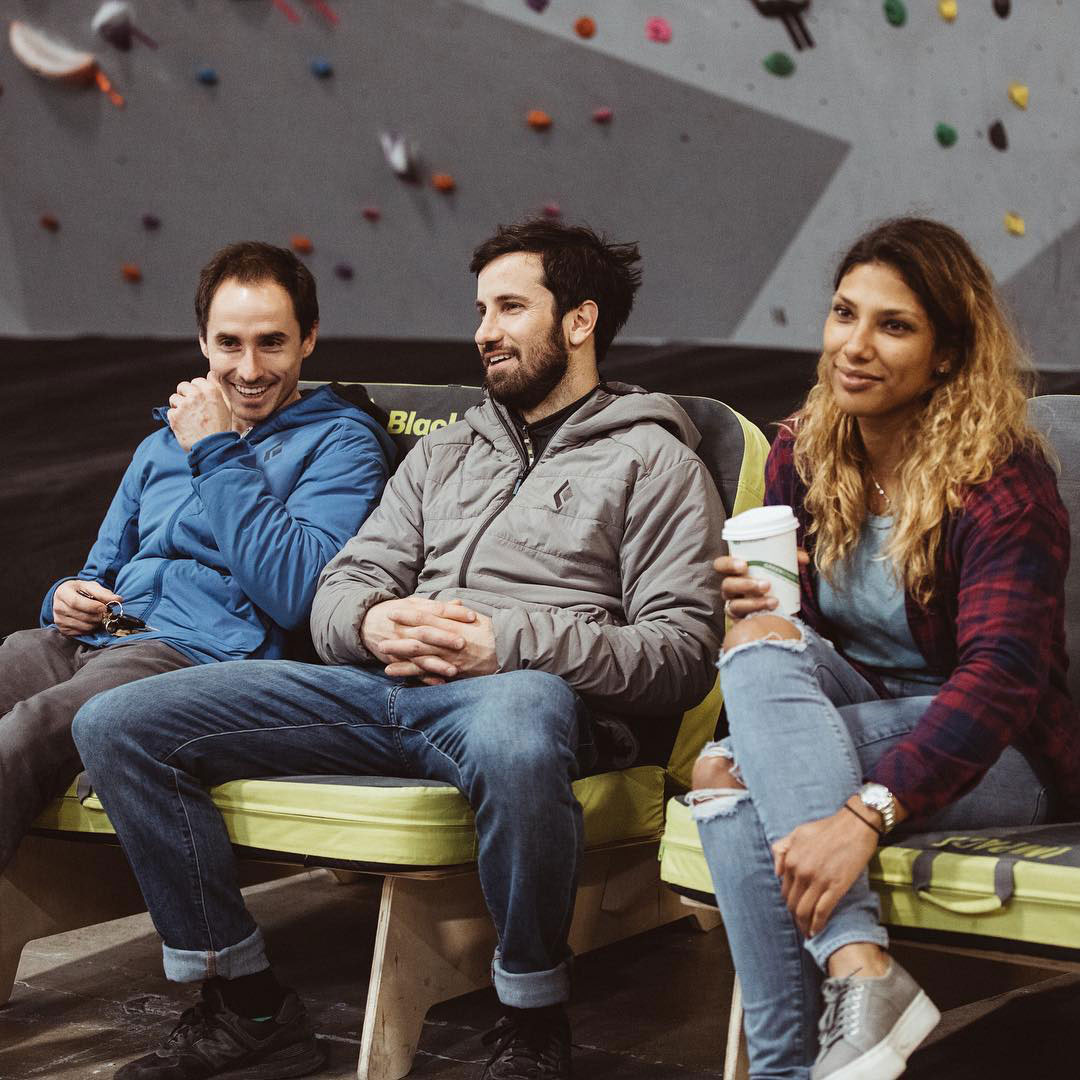
Why do I mention all this? My point is that setters aren’t just human resources in the workplace; they’re human beings, and human beings change. We grow up and explore life; we hone our skills and settle down; we age and start thinking about retirement. And through it all, we work for a living, and what a difference our work can have on our lives. In allowing me to scale my work up and down as my life changed, Carlo showed me freedom and flexibility in a larger sense—not just the freedom to have more time for climbing at one point in my setting career, but the flexibility to organize my work in a way that has always been a win-win for both me and the company. And for that, I am eternally grateful.
To get paid doing what I love—to be able to express myself through the unhindered freedom of movement and pour my heart and soul into a vehicle that has literally brought me all over the world and back home, allowing me to pursue climbing and setting to the fullest extent while meeting individuals far away and close to home who continually inspire me to live with an unyielding force for truth and kindness—well, I think that’s why I keep doing this work.
And it’s perhaps part of the reason why many generations of setters to come will also find inspiration as they pave their own path forward and strive to change the truth behind the trade.
Read More Chapters of Truth Behind the Trade
About the Setters
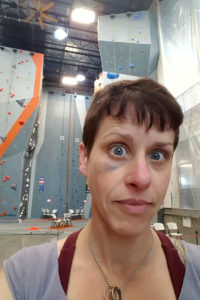 Molly Beard
Molly Beard
Molly started climbing in 1993 and began routesetting in 1995 after getting involved with a youth climbing team. She became the first U.S. woman to earn L5, chiefing three Youth Nationals in 2008-2009. She loves Mexican cuisine, BJJ, Hello Kitty, and chainsaws almost as much as her impact driver.
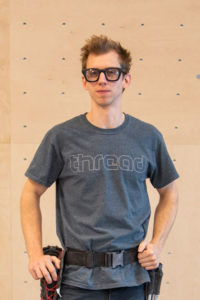 Brad Weaver
Brad Weaver
Brad is a Level 5 USAC National Chief Routesetter and IFSC Junior Routesetter who previously developed and managed the routesetting program for the Stone Summit chain of gyms in the Atlanta area until 2019. Brad has worked at each USAC National Championship competition in the past decade―adult and youth, bouldering and lead―and has set numerous international competition events and youth competition training camps. He now works with his colleague Chris Danielson at Thread Climbing.
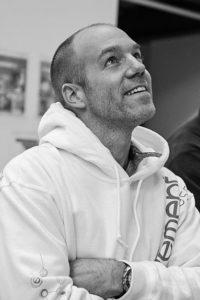 Chris Danielson
Chris Danielson
Chris has been climbing and setting since the early 90s and has worked at the highest level of competitions for nearly 20 years, most recently as the Chief Routesetter of the 2021 Moscow IFSC Bouldering World Championships. He is the owner of Thread Climbing, a leading climbing holds distribution company based in Boulder, Colorado, and has experience in many aspects of the industry, including federation work, gym start-up and design consultation, athlete training, and commercial setting and education.
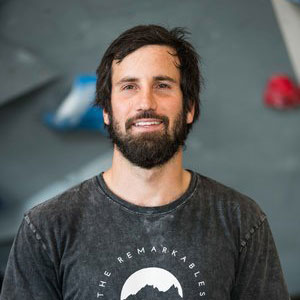
In the early 2000’s, Dave started screwing things to the walls inside of his shed. Two decades later, he is still doing the same thing, only on slightly nicer walls with more advanced materials. After studying journalism at the University of New Hampshire, he unwittingly fell into the then emerging trade of routesetting. These days, he fancies himself a writer and hopes that his stories might help others shift their perspective or share a laugh, or both. Dave is currently the head setter of The Boulder Field in Sacramento, California, and has been published in Climbing, Rock and Ice, Experience, and Urban Climber, among others.



